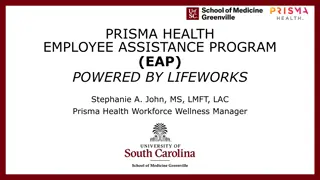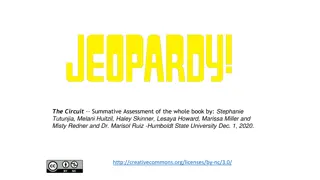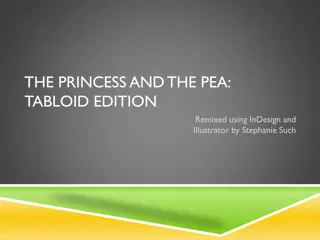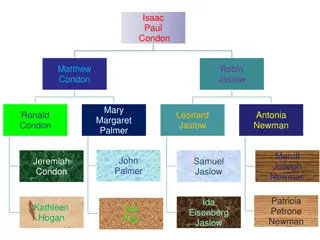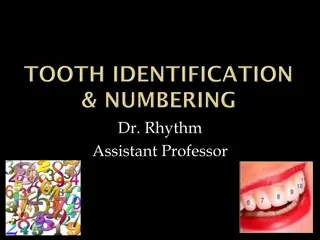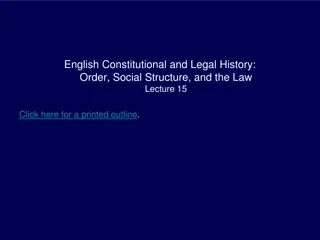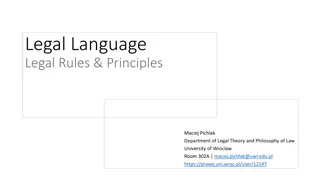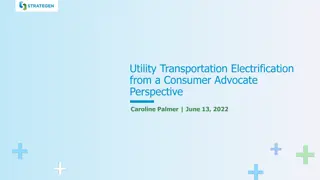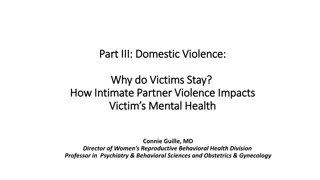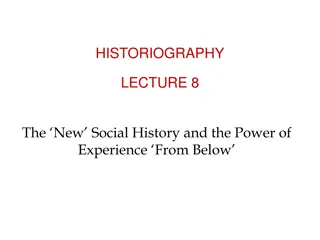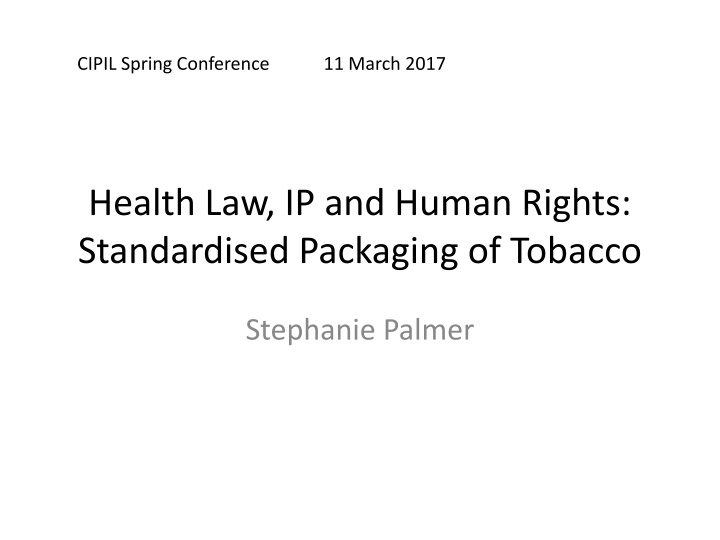
Health Law, IP, and Human Rights: Standardised Packaging of Tobacco Overview
Explore the intersection of health law, intellectual property, and human rights at the CIPIL Spring Conference. Delve into the impact of the WHO Framework Convention on Tobacco Control, UK legislation, and policies aimed at reducing tobacco use. Learn about motivational nudges, global initiatives, and efforts to protect public health through standardized packaging laws.
Download Presentation

Please find below an Image/Link to download the presentation.
The content on the website is provided AS IS for your information and personal use only. It may not be sold, licensed, or shared on other websites without obtaining consent from the author. If you encounter any issues during the download, it is possible that the publisher has removed the file from their server.
You are allowed to download the files provided on this website for personal or commercial use, subject to the condition that they are used lawfully. All files are the property of their respective owners.
The content on the website is provided AS IS for your information and personal use only. It may not be sold, licensed, or shared on other websites without obtaining consent from the author.
E N D
Presentation Transcript
CIPIL Spring Conference 11 March 2017 Health Law, IP and Human Rights: Standardised Packaging of Tobacco Stephanie Palmer
The Context Tobacco use, abuse of alcohol and unhealthy diets are among the most important risk factors of non-communicable diseases ( NCDs ), a leading cause of preventable death. A major challenge for social and economic development in the 21st century.
A right to health? International Law: WHO Framework Convention on Tobacco Control (February 2007) Regional Law: EU and in particular Art.35 CFREU Domestic law: No specific right to public health in the ECHR Positive Obligations : an obligation to protect State policy to promote good health
Cass Sunstein: Motivating Nudges Nudges steer people in particular directions but allow them to go their own way . Some nudges preserve freedom of choice for one population (consumers), while mandating action from some other population (producers).
A Global Issue WHO Framework Convention on Tobacco Control (February 2007) Spurred cooperative state action eg cross-border advertising and illicit tobacco trade Built international consensus around social norms, scientific facts and public health imperatives FCTC encourages but does not mandate that contracting states adopt standardised packaging laws
UK Legislation Children and and Families Act 2014 s.94 (1)The Secretary of State may make regulations if ..the regulations may contribute at any time to reducing the risk of harm to, or promoting, the health or welfare of people under the age of 18.
The Policy (a)discouraging people from starting to use tobacco products; (b)encouraging people to give up using tobacco products; (c)helping people who have given up, or are trying to give up, using tobacco products not to start using them again; (d)reducing the appeal or attractiveness of tobacco products;
(e)reducing the potential for elements of the packaging of tobacco products other than health warnings to detract from the effectiveness of those warnings; (f)reducing opportunities for the packaging of tobacco products to mislead consumers about the effects of using them; (g)reducing opportunities for the packaging of tobacco products to create false perceptions about the nature of such products; (h)having an effect on attitudes, beliefs, intentions and behaviours relating to the reduction in use of tobacco products.
The Standardised Packaging of Tobacco Regulations 2015 Regulations made pursuant to s.94 Children and Families Act 2014 And to s.2(2) ECA 1972 to the extent that the regulations implement the EU Tobacco Products Directive (Directive 2014/40/EU)
Apart from health warnings the only distinguishing text permitted on the packaging is a brand and variant name Font and maximum size of the text is specified Material, shape, opening and contents of unit packet of cigarettes subject to control
Stringent controls on packaging of cigarettes The only colour or shade permitted on or for the external packaging of a unit packet or container packet of cigarettes is Pantone 448 C with a matt finish Material, shape, opening and contents of unit packet of cigarettes specified
Regulations not to affect registration of trade marks etc 13. (1) For the avoidance of doubt, nothing in, or done in accordance with, these Regulations (a) forms an obstacle to the registration of a trade mark under the Trade Marks Act 1994(8), or (b) gives rise to a ground for the declaration of invalidity of a registered trade mark under section 47(1) of that Act (grounds for invalidity of registration).
Legal Challenge to the Regulations The tobacco companies have attempted to use human rights as a shield Tobacco companies claimed that property rights had been violated: (1)deprivation of property or (2) disproportionate control on the use of property. Lack of compensation Art 1 Protocol 1 ECHR; art.17 CFREU and common law rights
Art.1 Protocol 1 (1) Every natural or legal person is entitled to the peaceful enjoyment of his possessions. No one shall be deprived of his possessions except in the public interest and subject to the conditions provided for by law and by the general principles of international law.
(2) The preceding provisions shall not, however, in any way impair the right of a State to enforce such laws as it deems necessary to control the use of property in accordance with the general interest or to secure the payment of taxes or other contributions or penalties.
Three distinct rules Sporrong and L nnroth v Sweden (1983) 5 EHRR 35, [61] The first rule, which is of a general nature, enounces the principle of peaceful enjoyment of property; it is set out in the first sentence of the first paragraph. The second rule covers deprivation of possessions and subjects it to certain conditions; it appears in the second sentence of the same paragraph. The third rule recognises that states are emtitled to control the use of property
Deprivation or control of Use? A highly relevant factor in considering whether an interference amounts to a deprivation or a control of use is whether the complainant has retained legal title to the possession in question. Is it a de factoexpropriation ?
Pinnacle Meat Processors v United Kingdom (1998) 27 E.H.R.R. CD 217 Ian Edgar (Liverpool) Ltd v United Kingdom (App.37683/97) R. (Eastside Cheese) v Secretary of State for Health [1999] 3 C.M.L.R. 123
No formal deprivation a residual utility in these negative rights coupled with the retention of legal title means, in our judgment, that it cannot be said that the Tobacco Appellants have been deprivedof their national marks. R (British American Tobacco UK Ltd & others v S of S for Health [2016] EWCA Civ 1182 [106]
R (British American Tobacco UK Ltd & others v S of S for Health [2016] Court of Appeal found that the Regulation did not deprive the Tobacco appellants of their intellectual property rights but only sought to control their use. The regulations struck an appropriate balance between the public interest and private property rights, served a legitmate public interest and were proportionate
The Common Law Issue This case is about control of use and not about the taking or destruction of property The right to use property in a particular way is not itself property for the purposes of the common law. [128]
Human rights (A1P1) as a shield? Challenges are likely to be unsuccessful if: There is control on the use of property rather than deprivation The policy adopted has a legitimate aim Policy has been subject to extensive parliamentary consideration





